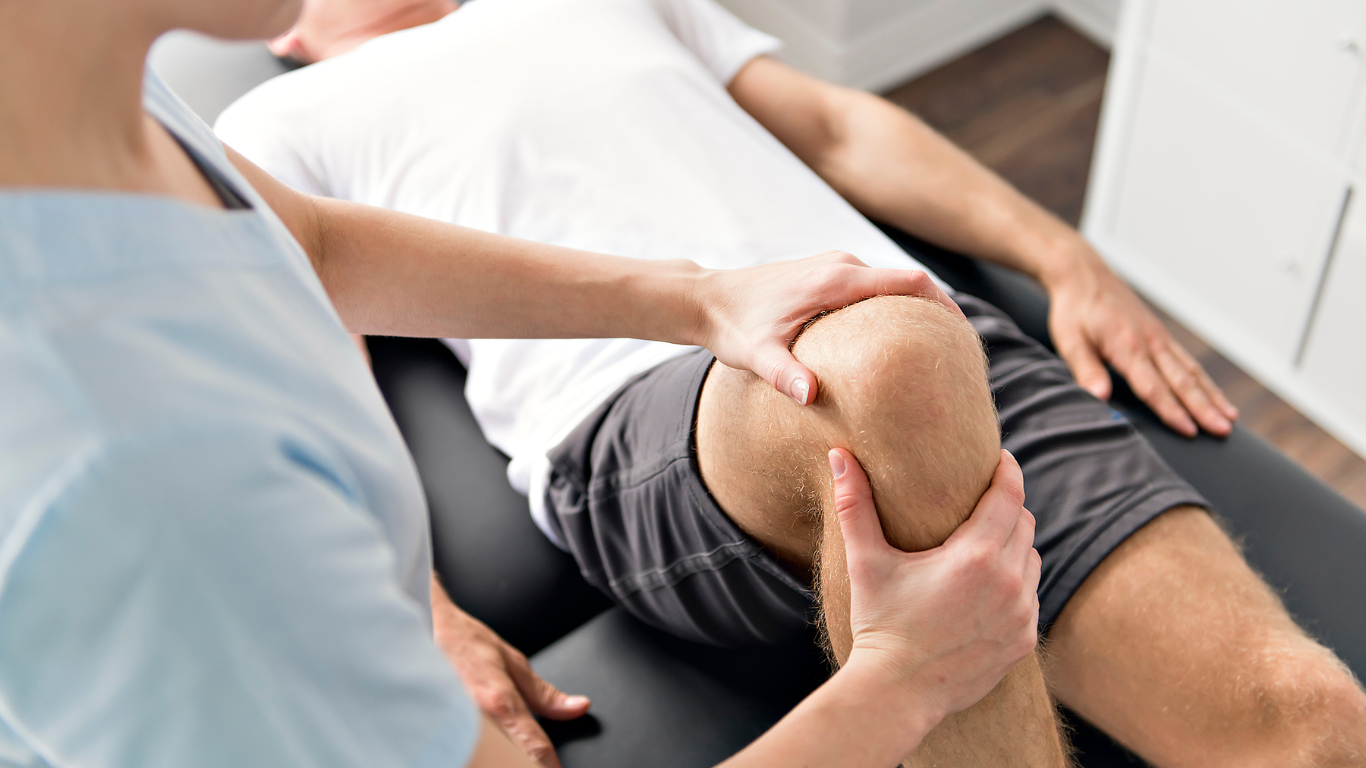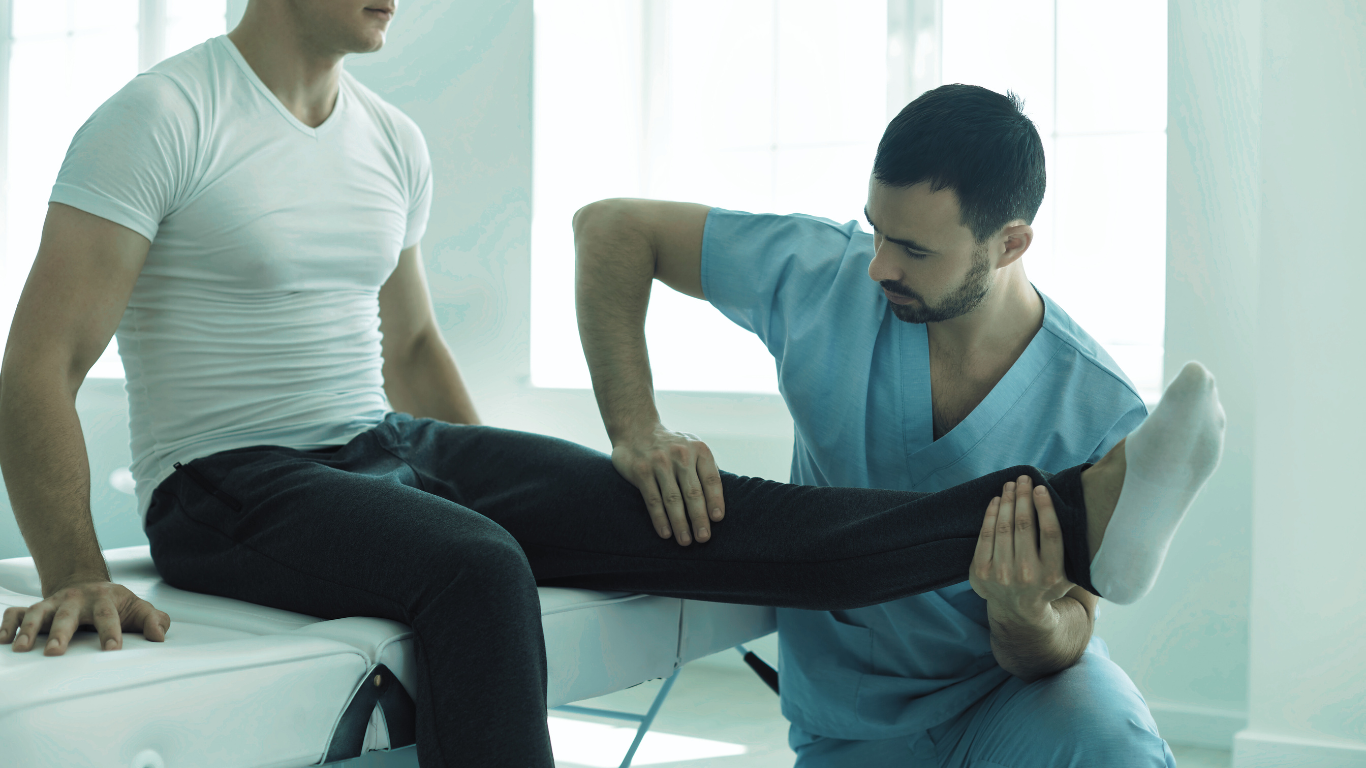
The Rise of ACL Injuries in Sport & How to Prevent Them
Why ACL injuries are becoming more common and how to protect your knees.
It’s the final minutes of a championship game. The score is tied, the pressure is mounting, and every movement counts. An athlete—let’s say a young footballer—sprints toward the goal, eyes locked on victory. They plant their foot to change direction, a sharp pivot to outmaneuver an opponent. And then—pop. A sharp pain shoots through their knee as they crumble to the ground. The crowd falls silent. Medical staff rush in. They know what’s likely happened before the MRI even confirms it: an ACL tear. This story is becoming all too familiar in the world of sport. ACL injuries have skyrocketed in recent years, sidelining athletes from all levels—whether its professional players competing on the world stage, local club members striving for personal bests, or even weekend warriors just looking to stay active. From football fields to netball courts, basketball courts to ski slopes, the demanding nature of modern sport has placed the knee under more stress than ever before.
Why Are ACL Injuries Becoming More Common?

Faster, More Intense Gameplay
Modern sports have evolved, becoming more competitive, dynamic, and physically demanding. Athletes today are stronger, quicker, and more explosive, performing movements that place significant stress on the knee joint. Quick changes in direction, rapid decelerations, and forceful landings are prime triggers for ACL tears, as the ligament is often unable to withstand the sudden force. The demand for high-speed, high-impact movements has increased, making ACL injuries more common in fast-paced sports like football, netball, basketball, and skiing. With new training methodologies pushing athletes to perform at higher intensities, their risk of injury has inevitably risen.
Overuse and Early Specialisation


Athletes—especially young ones—are increasingly specialising in a single sport year-round without adequate rest. The constant repetition of the same movements and lack of cross-training increase stress on the knee, making it more vulnerable to injury. Many athletes begin high-intensity training at an early age, without allowing their bodies the necessary time to develop proper strength and stability. Additionally, overworked and fatigued muscles cannot provide adequate stabilisation to the knee joint, further increasing ACL risk. Without proper recovery strategies and structured training periods, the risk of ligament overuse skyrockets.
Muscle imbalances and movement errors

A major factor in ACL injuries is poor movement mechanics and muscular imbalances. Individuals make have weaker quads, hamstrings, glute or core muscles, causing their knees to collapse inward when landing, pivoting, or cutting. Without proper neuromuscular control and stability, these athletes are significantly more prone to ACL tears. When an athlete’s quadriceps overpower their hamstrings, the imbalance can create excessive strain on the ACL, increasing the likelihood of rupture. Additionally, inadequate proprioception (body awareness) and poor coordination can lead to uncontrolled knee movements, further elevating injury risk.
How Physiotherapy Helps You Stay Active & Injury-Free
Minor discomfort may not seem like a big deal, but ignoring it can lead to chronic pain, reduced mobility, and decreased performance. Small imbalances can cause compensations in your movement, leading to further strain and injury over time.

Physiotherapy helps correct these issues early, keeping you active and pain-free.
- Injury Prevention & Movement Screening – Identifying muscle imbalances, mobility restrictions, and weak points before they lead to injuries.
- Strength & Stability Training – Building a strong foundation to support your body’s movements and reduce strain on joints and muscles.
- Flexibility & Mobility Improvement – Enhancing range of motion and reducing stiffness through stretching, joint mobilisation, and soft tissue therapy.
- Recovery & Rehabilitation – Hands-on treatment, dry needling, and personalised rehab programs to restore function and prevent future issues.
- Performance Enhancement – Optimising movement efficiency, improving power output, and refining mechanics to help you train harder and recover faster.
How do you know when it’s time to see a physio?

- Pain or Discomfort That Won’t Go Away – If knee pain, back stiffness, or shoulder discomfort lingers after training, it’s time to get it checked before it worsens.
- Recurring Injuries or Stiffness – If you keep dealing with the same injuries, there’s likely an underlying cause that needs to be addressed.
- Reduced Mobility or Flexibility – If movement restrictions are affecting your performance or causing discomfort, physiotherapy can help restore range of motion.
- Weakness or Instability – Feeling off-balance, unstable, or like certain muscles aren’t engaging properly? A physio can identify and correct the issue.
Frequently Asked Questions
ACL tears are best prevented through a combination of neuromuscular training, targeted strengthening (especially hamstrings, glutes, and core), balance and proprioception exercises, sport-specific movement retraining, and optimising landing/pivoting technique. A physiotherapist can tailor injury prevention protocols based on your movement patterns and risk factors.
ACL graft retear rates after reconstruction vary; studies suggest between 5–20% risk, especially in young, active athletes or those returning to high-risk sports too soon. A second injury is more likely if underlying muscle imbalances or improper movement habits persist.
The leading cause is non-contact rapid change of direction or sudden landing, causing excessive force and knee valgus stress beyond what the ACL can tolerate; poor biomechanics, muscle imbalance, or fatigue commonly contribute to this injury pattern.
Yes, some athletes can return to sport without ACL reconstruction, particularly in less demanding activities or with isolated ACL tears (no meniscus damage). Success depends on dedicated strength training, neuromuscular control, and accepting potentially reduced performance levels. However, surgical reconstruction is typically recommended for athletes in high-level pivoting sports like football, netball, and basketball to restore full knee stability.
Grade 1 involves minor ligament stretching with no instability; Grade 2 is a partial tear with some looseness but fibers still connected; Grade 3 is a complete rupture with significant instability. Treatment approaches vary significantly, with Grade 1 often managed conservatively, while Grade 3 typically requires surgical reconstruction.




